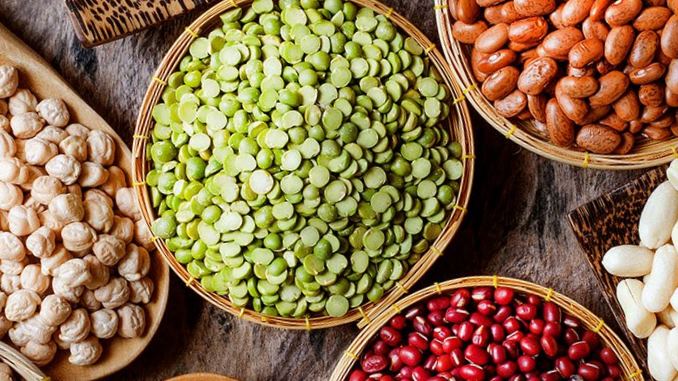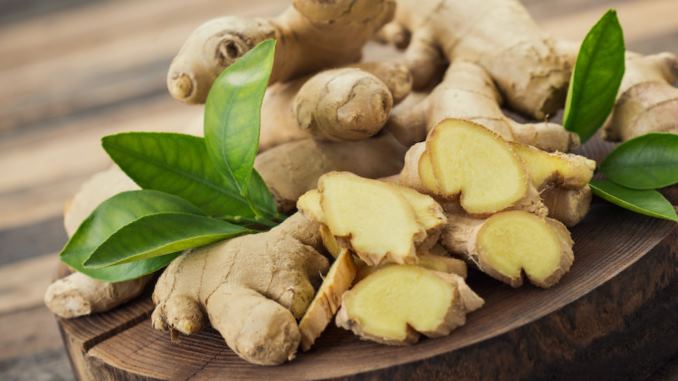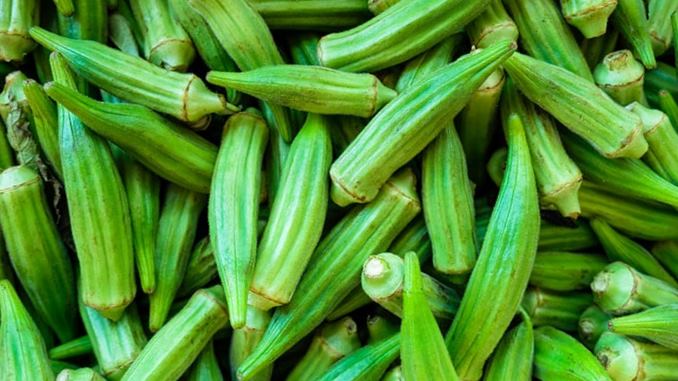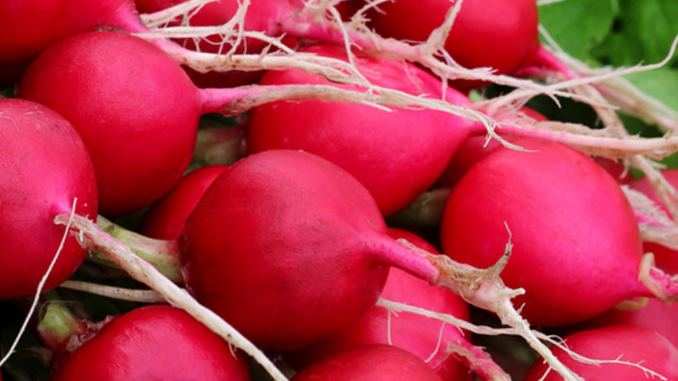When it comes to cooking, veggies play a crucial role in every country’s cuisines.
Not only do they offer the much-needed fiber and vitamins for the body, but they also balance the taste alongside starch and protein. But how much do you actually know about vegetables?
In the list of vegetables from A to Z below, we have introduced the 30 most popular plants used in the kitchen. Keep reading to explore their most notable features and how cooks can utilize these veggies for nutritious meals.
Arrowroot
Arrowroot is a tropical plant, especially popular in India. People already started using arrowroot powder to treat stomach aches, diarrhea, and other digestive problems a long time ago.
Artichoke
Artichoke has an edible flower head that tastes a bit bland and earthy when boiling. It is mostly used to fight high blood sugar and liver problems.
Related: How to store fresh artichokes
Asparagus

Asparagus is rich in nutrients and usually accompanies steak and French fries. Scientists believe a regular intake of asparagus can regulate the digestive system and boost the heart’s functions.
Avocado
Avocado is a tropical fruit with green, soft flesh. Its distinct taste makes avocado a perfect addition to toast, salmon, and egg. Major countries consuming avocados include Mexico and the US.
Bamboo shoots
Bamboo shoots are prevalent in Asian countries due to their versatility in cooking. Whether boiling or roasting or serving as a side dish, bamboo shoots can handle it all.
Bean

Beans are often overlooked in the diet as they can only be served boiling or with salads. However, beans are among the highest sources of plant-based protein, fiber, and antioxidants in the world.
Bitter melon
As the name indicates, bitter melons have a sharp, bitter overtone that can be overwhelming. The edible flesh is best cooked as a veggie soup or served raw as salads while the seeds are dried for alternative medicine.
Beetroot
Primarily found in North America, beetroots are claimed to boost blood flow and reduce the risks of blood clots. Beetroots can be served with risotto, hummus, salad, and even cakes.
Bok choy
Bok choy is a type of cabbage native to China, which gives a sweet taste like spinach. Bok choy is famous for its capability to prevent cancer if eaten in moderation.
Related: Can you freeze bok choy?
Broccoli

Broccoli offers a high amount of fiber, iron, magnesium, and other vitamins necessary to the development of the body. The easiest way to cook broccoli is to have it boiled or roasted as a side dish with other proteins and starches.
Related: How to keep broccoli fresh after cutting
Brussel sprout
Brussel sprouts are like baby cabbages that stand out with their round shape and tiny size.
Cabbage
Cabbage is rich in vitamin C and vitamin K, two compounds that are considered essential to your body. It is cheap, tasty, and can be made into different dishes.
Read more:
- Can you freeze cabbage soup?
- Can you freeze cabbage casserole?
- Can you freeze cabbage without blanching?
- How thin to slice cabbage for sauerkraut?
Capsicum
Native to America, capsicum refers to any plants classified as chili, including chili pepper, bell pepper, etc. Eating capsicum can boost your digestive system while applying capsicum extracts on the skin is believed to cure arthritis.
Carrot

Carrot is best known for its antioxidants, which fight back inflammation in your body. It is also a common belief that eating carrots frequently can help protect your eyes and slow down the aging process.
Cassava
Also known as yuca root, cassava is a starch native to South America. Cassava is high in carbs and calorie count while being relatively cheap, making it a perfect source of nutrition for low-income people.
Cauliflower
Cauliflower is a nutrient-packed green, as 100gr would come along with the daily recommended dose of vitamin C as well as 5% of the recommended dose for minerals. You can cook cauliflower by boiling it in deep water for salad or roasting it to serve with meat.
Related: How to store cauliflower in the refrigerator
Celeriac
Celeriac is the root of the celery, whose taste is similar to its leafy counterparts. Thanks to celeriac’s nutty flavor and crunchiness, people usually use them for stews and salads.
Celery
Celery is considered a marshland plant, best known for its weight-controlling ability. Celery juice is believed to detoxify the whole body while keeping the calorie count as low as possible.
Related: How to store cut celery in the fridge
Corn

Corn is a staple food in many countries, including the US, China, Ukraine, India, Argentina. As corn crops can thrive easily, many dishes using this vegetable have been made to accompany the massive production, like grilled corn or corn cake.
Cucumber
Cucumber has the highest content of water – up to 96%. Usually eaten raw or served with salads, cucumber can quench the thirst while giving diners crunchy sensations when biting down. It is also utilized in the beauty industry, with cucumber masks and cucumber-based lotion.
Eggplant

Eggplant has an outstanding purple skin with white flesh and is mainly used for savory dishes. Its high concentration of fiber makes eggplant crucial to the well-being of your skin, teeth, and hair.
Fennel
Fennel serves as both an herb for cooking and alternative medicine in Eastern countries. It has a sweet aroma with a hint of sharpness that can soothe the mind and relax the muscles.
Garlic
Garlic is best known in many Asian countries as a cure for headaches, and it can protect your internal organs from metal toxicity.
Read more:
Ginger

Famous for its sharpness and spicy taste, not only is ginger a vegetable, but it is also an alternative medicine that reduces nausea, clears the mind, and boosts digestion.
Related: How to store fresh ginger root
Jicama
Jicama stands out with its crunchiness and a high percentage of water, effectively quenching the thirst upon eating. Jicama can be served raw as fruit or stir-fried with other proteins as a main dish.
Kale
In recent years, kale has been widely popular as a superfood that energizes the body, freshens the mind, and provides a significant dose of vitamins. Better consumed raw than cooked, kale is now one of the most common vegetables for health purposes.
Leek
Leeks have a sweet flavor with just a hint of sharpness, so they go very well with stews and soups. On the outside, leeks bear certain resemblances to shallots and onions due to their shared category.
Related: How to store leeks
Lettuce

Lettuce is a leafy vegetable that can be served cooked or raw. Regular consumption of lettuce can provide the body with folate and vitamin A.
Related: How to store lettuce in the fridge
Mushroom
Used in various dishes, mushrooms are one of the most popular greens, thanks to their deliciousness, versatility, and availability.
Related:
Onion
Onions are believed to reduce cholesterol levels, leading to a healthier heart with their antioxidant compounds.
Related:
Okra

Okra is not the most delicious plant in the world, as it tastes grassy and creamy simultaneously. Still, a serving of okra every few days is enough to manage your blood sugar and control diabetes.
Parsnip
Parsnips are rich in vitamin C and potassium, which are essential to your heart’s health. When sliced and served raw, they taste pretty much like carrots with a crunchiness and sweet aftertaste.
Peas

Grown in the cool seasons and stored within each pod, peas are an irreplaceable green to the human diet. They are rich in vitamins and zinc, which improve the immune system and aid in diabetes management.
Potatoes
Potatoes pride themselves on the high dose of carb and protein, creating an instant sense of fullness. They can be cooked as a main dish in stew or bread, and they also make excellent side dishes when being fried or roasted.
Read more:
- Is it safe to microwave potatoes?
- Can you eat undercooked potatoes?
- Can you microwave frozen fries?
- Potato flour substitutes
Radish

High in water and rich in minerals, radishes make an excellent addition to your diet by improving blood flow and lowering blood pressure.
Related: What is the best way to store radishes?
Shallot
Usually mistaken with onions, shallots are mainly used for seasonings and garnish. They can be served raw or cooked, sliced or chopped, depending on the meal. Upon tasting shallows, you can notice a lingering sweet aftertaste that leaves little spiciness behind.
Spinach
Spinach is a leafy vegetable packed with essential minerals like magnesium, phosphorus, and calcium. Together, these compounds maintain and improve your body’s bone structure, preventing any mobility issues early on.
Tomato
Water-packed and filled with vitamin C, tomatoes are among the easiest veggies to cook and mix with other ingredients. However, excessive consumption can lead to joint pains and swelling, so make sure you moderate the number of tomatoes in your diet.
Turnip

Both the round root and the leaves of the turnip are edible, making it an extremely versatile green. When cooked, turnip tastes a bit like sweet potatoes, so it is a starchy binder for many dishes.
Watercress
Watercress has long been considered a superfood due to its high concentration of vitamins (namely A, C, and K) and folate.
Zucchini
Zucchini is packed with antioxidants and is low in sugar, making it a perfect vegetable for weight control.
Conclusion
Now that you have read through the list of vegetables from A to Z, it is time to apply this knowledge to real-life situations. So prepare your kitchenware and get ready right away!

